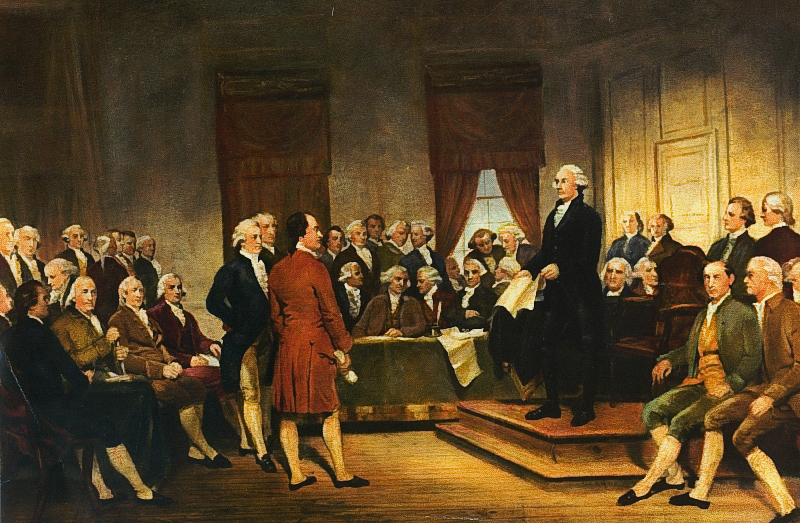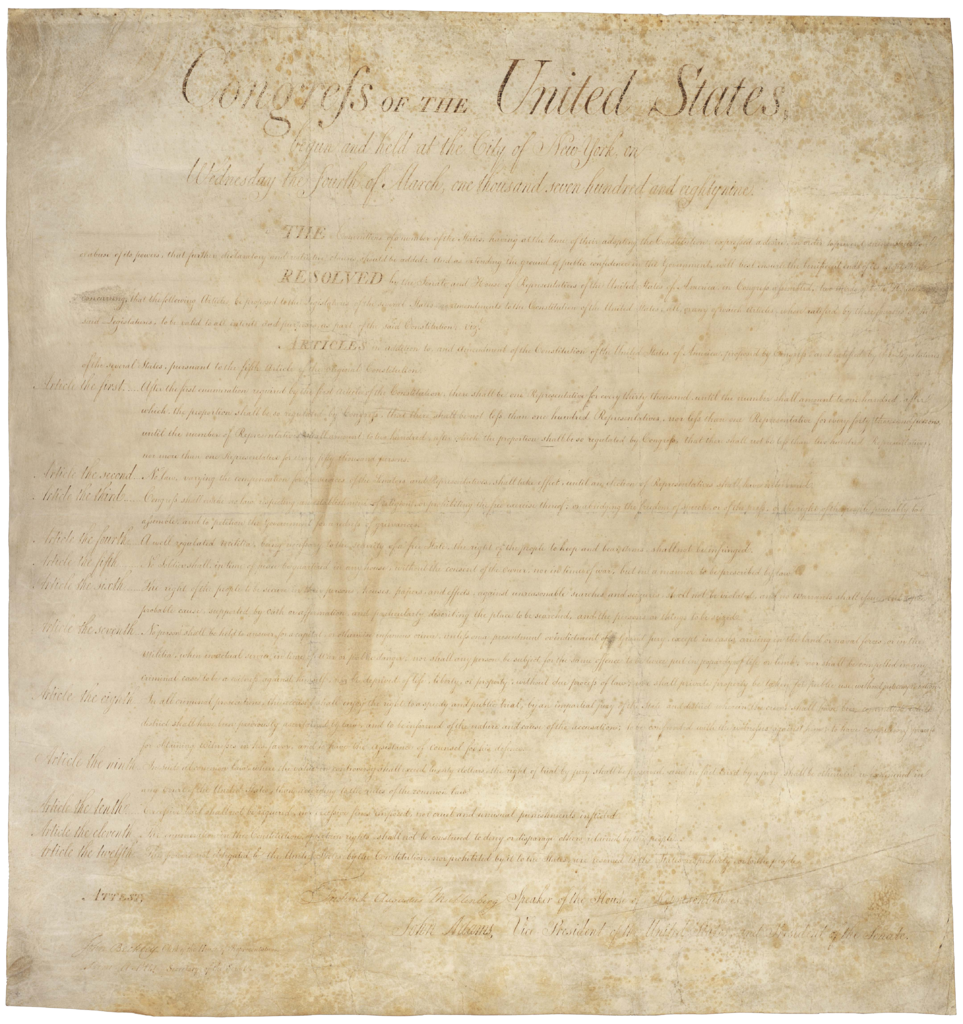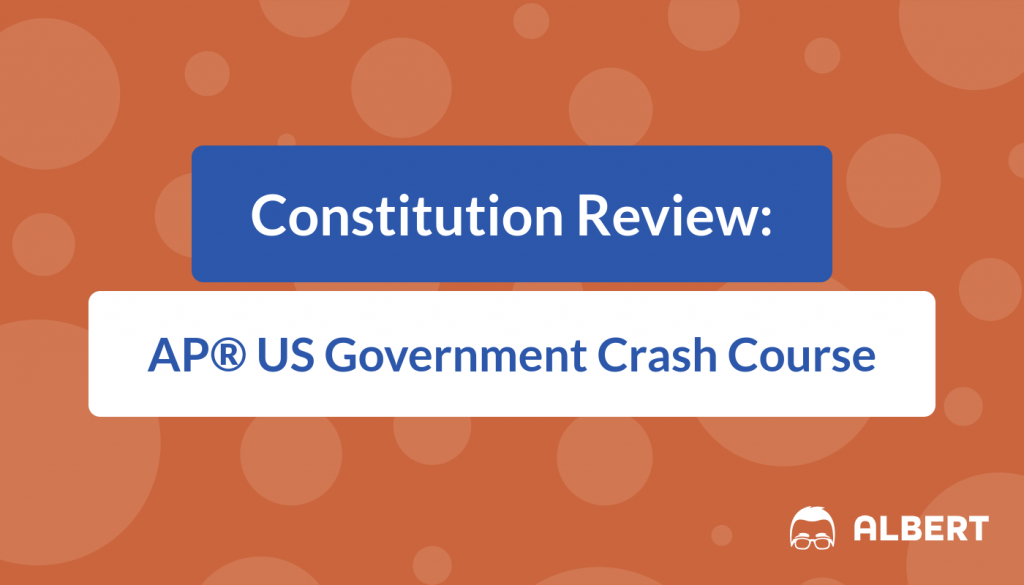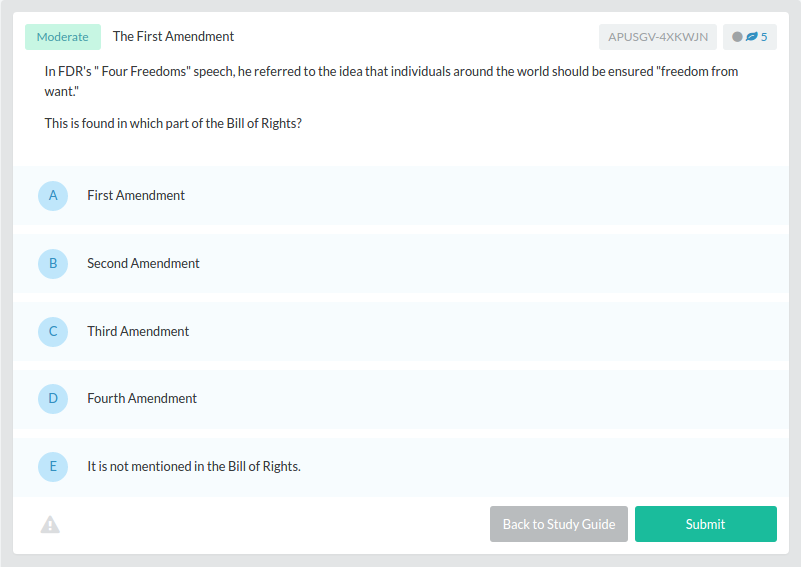It is arguably the most revered document in the world. Countless countries, after revolution or liberation, have looked to it to guide their own nation-building processes. The Constitution, written in the wake of the failed Articles of Confederation and ratified by the states in 1789, outlines the structure and function of our government and also, through the Bill of Rights and subsequent amendments, guarantees our civil rights and liberties.
Americans are proud of their Constitution and are highly reluctant to allow any changes to it, which is why in our nation’s entire history it has only been amended 27 times, and only after considerable struggle. Many worthy amendments—such as the Equal Rights Amendment—have failed to pass because of this sentiment.
The Constitution is only five pages long. It merely outlines the structure and basic functions of government; it was left up to Congress to create laws that would govern the activities of quotidian life. The meaning of the Constitution, when it is unclear, is left up to the Supreme Court to decide. Over the years, the Court has supplanted the Constitution with a wide body of constitutional law, which has clarified and at times expanded Americans’ rights and liberties.
The Constitution of 1787
The Constitution contains seven articles. Most of the Constitution deals with the legislature, or Congress (Article I). The founders considered Congress to be the primary branch of the new government—as opposed to the presidency. Records of the Constitutional Convention show that most of the time was spent dealing with Article I.

The only real specifics contained in the Constitution—things like the Speaker of the House and the President of the Senate—pertain to the Congress. Congress is also given 17 specific duties, such as regulating interstate commerce and creating roads.
The Executive
Most of the details about the executive—the president—in Article II deal with the Electoral College, and many of those details have been amended over the years. There is minimal job description provided for the president and most of his powers are checked by Congress or open to interpretation. The Founders did not intend to create a powerful presidency.
The Judicial Branch
Article III of the Constitution deals with the judiciary and like Article II does not contain much detail. There is a minimal description of the Supreme Court, and an outline of the process by which new federal courts can be created if the need arises. Much of the article deals with how judges are appointed and how they can be removed from office.
Then, much of Article III deals with treason.
Articles IV, V and VI
These amendments describe how the states interact, how amendments can be created and establish the legal status of the federal government. Article IV contains the “Full Faith and Credit” clause, meaning that the states must respect the laws of the other states. Article VI gives the Constitution its “supremacy” status.
Article VII
This article deals with ratification—i.e., how the states can approve the new Constitution. The Constitution was officially ratified in 1788, when nine states had approved it. However, the nation waited for two key states—Virginia and New York—to also ratify the Constitution before it held elections for Congress and president.
After this, North Carolina reversed itself and ratified, and Rhode Island, the lone holdout among the 13 colonies, finally ratified in 1791.
The Bill of Rights and Other Amendments

There was considerable opposition to the new Constitution from the anti-Federalists, particularly in New York, Virginia and North Carolina, three of the states that ratified near the end. The anti-Federalists insisted that clearer limits be placed on federal power, so the Federalists agreed to add a series of new amendments as soon as the Congress could form, in 1789.
James Madison, who was originally elected as a member of the House of Representatives, led the drafting of what became the Bill of Rights—the first ten amendments to the Constitution. These amendments are:
1. First Amendment: deals with freedom of religion, speech, press, assembly and petition.
2. Second Amendment: deals with the right to bear arms.
3. Third Amendment: prohibits the forced quartering of troops.
4. Fourth Amendment: prohibits unreasonable search and seizure.
5. Fifth Amendment: concerns indictments, the probation on double jeopardy (being tried twice for the same crime) and just compensation.
6. Sixth Amendment: guarantees a speedy public trial, the right to confront witnesses and to seek counsel.
7. Seventh Amendment: guarantees a jury in civil trials.
8. Eighth Amendment: concerns excessive bail and cruel and unusual punishments.
9. Ninth Amendment: specifies the rights that are retained by the people.
10. Tenth Amendment: specifies the rights that are retained by the states—basically, all those not enumerated in the Constitution.
Initially the Bill of Rights was viewed as only applying to the federal government. Since the passage of the Fourteenth Amendment, the Supreme Court has slowly applied these requirements to the states as well, in a process known as selective incorporation.
Subsequent Amendments
The Constitution has changed surprisingly little since the Bill of Rights passed. Since then, there have only been 17 amendments, and most of them are technical. These include:
1. Eleventh Amendment: the rules for lawsuits against states.
2. Twelfth Amendment: concerns separate votes for president and vice-president.
3. Seventeenth Amendment: concerns the direct election of senators.
4. Twentieth Amendment: gives a new starting date for federal terms.
5. Twenty-Second Amendment: establishes a two-term limit for presidents.
6. Twenty-Third Amendment: gives Washington, D.C. three electoral votes.
7. Twenty-Fifth Amendment: establishes rules for succession of the president dies in office or becomes incapacitated.
8. Twenty-Seventh Amendment: establishes Congressional pay rises.
The more substantive amendments are the following:
1. Thirteenth Amendment: abolishes slavery.
2. Fourteenth Amendment: makes former slaves citizens and entitles them to due process and equal protection under the law.
3. Fifteenth Amendment: guarantees voting rights for former slaves.
4. Sixteenth Amendment: establishes a federal income tax.
5. Nineteenth Amendment: gives women the right to vote.
Two amendments cancel each other out. These are the Eighteenth and Twenty-First Amendments, the first of which began Prohibition (which forbid alcohol) and the latter, which ended Prohibition.
Judicial Interpretation
Various amendments have been proposed over the years—notably, the Equal Rights Amendment, which would have guaranteed certain civil rights and liberties for women—but have failed to pass. In recent times, some politicians have called for a constitutional amendment to regulate the flow of money in politics.
This is in response to recent decisions of the Supreme Court such as Citizens United. Since Marbury v. Madison, the Court has been the arbiter of disputes over what the Constitution means—including what rights it guarantees. While the Constitution does not explicitly guarantee a right to privacy, for instance, the Court has found that this right is implied by other parts of the Constitution.
Now let’s take a look at a sample free-response question.
A Sample AP® US Government & Politics Free-Response Question (FRQ)
The framers of the Constitution created a political system based on limited government. The original Constitution and the Bill of Rights were intended to restrict the powers of the national government. Later constitutional developments also limited the powers of state governments.
1. Explain how each of the following limits the powers of the national executive.
2. Federalism
3. Checks and balances
4. Explain how each of the following two provisions in the Bill of Rights limits the powers of the national government.
5. Establishment clause
6. Guarantee of a public trial
7. Choose one of the following and explain how it limits the power of state governments.
8. Citizenship clause of the Fourteenth Amendment
9. Selective incorporation
This is an involved question, but also fairly straightforward. For (a), we know that federalism limits the power of the federal government because the national and state governments share governing powers. Checks and balances limit the powers of the national executive because Congress and sometimes, the courts must approve many of his actions.
For (b) we know that that Establishment Clause prohibits the establishment of a state religion, like in the United Kingdom. In not being able to sanction one religion over another, the national government is unable to enforce its will through the institution of the church. The guarantee of a public trial ensures that the national government cannot lock up its critics or opponents on a pretense in order to suppress dissent.
For (c), let’s choose selective incorporation. We know that selective incorporation applies the Bill of Rights, which was originally only applied to the national government, to the states. This means that states are limited in the rights they can restrict—and many did, before the passage of the Fourteenth Amendment.
The Wrap Up
The Constitution is not a difficult document to understand because it is so short and contains so little detailed information. Remember this. Remember that the Constitution deals mostly with the Congress and that the amendments were added to please the anti-Federalists.
You should also be aware of the Court’s role in interpreting the Constitution, and of the fact that it has hardly changed since it was written; mostly the laws written by Congress and the Court’s body of constitutional law govern our country.
Good luck on the AP® US Government & Politics exam!
Let’s put everything into practice. Try this AP® US Government practice question:
Looking for more AP® US Government practice?
Check out our other articles on AP® US Government.
You can also find thousands of practice questions on Albert.io. Albert.io lets you customize your learning experience to target practice where you need the most help. We’ll give you challenging practice questions to help you achieve mastery of AP® US Government.
Start practicing here.
Are you a teacher or administrator interested in boosting AP® US Government student outcomes?
Learn more about our school licenses here.









